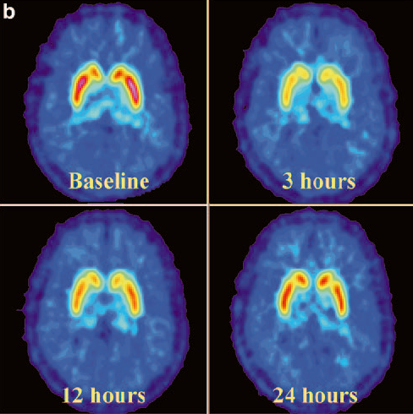CNS Drug Development Consultancy
The Burt Consultancy portfolio includes a range of CNS drug development projects. These include development of drugs and devices for psychiatric and neurological disorders (e.g., mood and anxiety disorders, neurodegenerative conditions, pain).
Examples of CNS drug developmental scenarios from Dr. Burt's career. These Burt Consultancy portfolio projects highlight unique challenges and their respective solutions:
A lead candidate of an otherwise promising first-in-class anti-depression and anti-anxiety drug was doomed for termination. The reason was that 2 of the preclinical species returned with thyroid black as coal. This is a rare condition and the clinical team, not able to obtain from the preclinical group satisfactory explanations for the finding, decided to terminate the drug. Dr. Burt initiated an investigation and reached out and convened a team of stakeholders all with expertise relevant to the findings. These included endocrinologists, experts in the drug class, liver metabolism experts (since that was the suspected site of production of the pigment), and regulators. The conclusion was that the modification that added the pigmentation led to accumulation in the thyroid. It was further concluded that the product of the modification was chemically inert and pathologically benign. A consultation with the FDA revealed that the agency has had experience with such findings in the past. In one such case (quetiapine) the dossier was obtained through freedom of information (FOI). It confirmed the agency's lack of concern with the 'black thyroid' findings. The candidate drug proceeded to clinical development.
Sertraline was slated for re-development in Japan after the failure of an initial bridging strategy. The Japanese authorities raised ethical concerns due to availability of multiple antidepressants in the market. The concern was that patients in the required placebo group will be deprived known effective treatments. Dr. Burt led a team that oversaw the development program with a randomized-withdrawal design. Under the design all patients were initially given sertraline. Those that responded were randomized to sertraline or placebo. The design ensured that immediately upon re-emergence of depressive symptoms patients were discontinued from the study. These withdrawal depression symptoms (the primary outcome) were then managed with approved antidepressants. A similar study was done for panic disorder indication. Both studies were successful leading to approval for depression and panic disorder indications.
Kamijima, K., Kuboki, T., Kumano, H., Burt, T., Cohen, G., Arano, I. & Hamasaki, T. (2005). A placebo-controlled, randomized withdrawal study of sertraline for panic disorder in Japan. Int Clin Psychopharmacol 20, 265-73. PMID: 16096517
Kamijima, K., Burt, T., Cohen, G., Arano, I. & Hamasaki, T. (2006). A placebo-controlled, randomized withdrawal study of sertraline for major depressive disorder in Japan. Int Clin Psychopharmacol 21, 1-9. PMID: 16317311
This was a large regulatory Phase-3 placebo-controlled study of an antidepressant for the treatment of major depression. The study had a pre-determined interim analysis included in the study design. The interim analysis showed a lack of separation between drug and placebo. In addition, the analysis showed discrepancies between the rating scales for depression. For example, the Hamilton Rating Scale for Depression (HRSD) had incongruent disease severity ratings when compared with the Clinical Global Depression (CGI) scale. The team decided to re-train the raters including the investigators. The team also visited the sites to observe research subject management. It identified several practices that had a high potential for inflation of placebo response. An intensive and targeted training program was initiated. Inter-rater reliability was tested with multiple case studies. The intervention was effective. The second half of the study significant separation of drug from placebo. The separation was large enough to compensate for the lack of separation in the first half of the study. The study was successful and led to approval.
The following are Dr. Burt's publications on Early-Phase Clinical Development, including Burt Consultancy portfolio projects:
Thyroid Autoimmune Antibodies and Major Depressive Disorder in Women. Ann Acad Med Singapore 44(8), 284-9. PMID: 26477960
Comparison of duloxetine, escitalopram, and sertraline effects on cytochrome P450 2D6 function in healthy volunteers. J Clin Psychopharmacol 27, 28-34. PMID: 17224709
Gender differences in clinical presentation and response to sertraline treatment of generalized anxiety disorder. Hum Psychopharmacol 20, 3-13. PMID: 15551351
Randomized trial of sertraline versus venlafaxine XR in major depression: efficacy and discontinuation symptoms. J Clin Psychiatry 66, 1312-20. PMID: 16259546
Optimal length of antidepressant trials in late-life depression. J Clin Psychopharmacol 25, S34-7. PMID: 16027559
Sertraline in generalized anxiety disorder: efficacy in treating the psychic and somatic anxiety factors. Acta Psychiatr Scand 111, 429-35. PMID: 15877709
Efficacy, safety, and tolerability of sertraline in patients with late-life depression and comorbid medical illness. J Am Geriatr Soc 52, 86-92. PMID: 14687320
A randomized, placebo-controlled study of the efficacy and safety of sertraline in the treatment of the behavioral manifestations of Alzheimer's disease in outpatients treated with donepezil. Int J Geriatr Psychiatry 19, 9-18. PMID: 14716694
Does antidepressant therapy improve cognition in elderly depressed patients? J Gerontol A Biol Sci Med Sci 58, M1137-44. PMID: 14684712
Neuropsychiatric applications of transcranial magnetic stimulation: a meta analysis. Int J Neuropsychopharmacol 5, 73-103. PMID: 12057034
The effects of vagus nerve stimulation on cognitive performance in patients with treatment-resistant depression. Neuropsychiatry Neuropsychol Behav Neurol 14, 53-62. PMID: 11234909
Forced titration as a confound in an SSRI comparator study of sertaline versus citalopram in the treatment of major depressive disorder. Biol Psychiatry 50, 66-8. PMID: 11478291
Vagus nerve stimulation: a new tool for brain research and therapy. Biol Psychiatry 47, 287-95. PMID: 10686263
Learning and memory in bipolar and unipolar major depression: effects of aging. Neuropsychiatry Neuropsychol Behav Neurol 13, 246-53. PMID: 11186160

